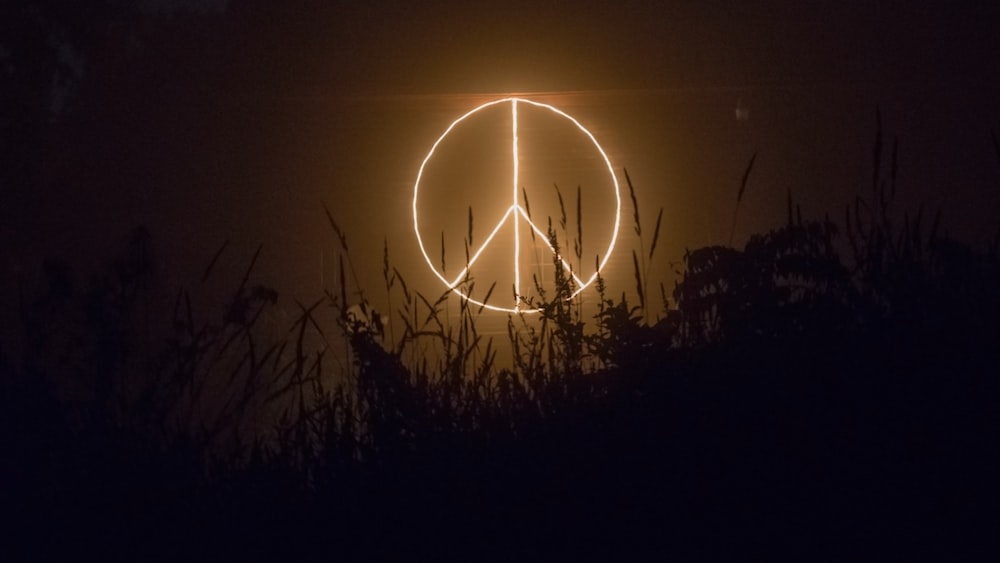When Did Mindfulness Become Popular? The Evolution Of A Powerful Practice
Hello, dear mindful reader! My name is Zen, and I’m your friendly guide for today’s enlightening journey. Are you, like me, perplexed about how mindfulness went from monastic circles to being the hottest trend in every self-improvement book? It’s as if mindfulness, once an obscure Buddhist notion, had a radical makeover, donned some yoga pants, and started sipping green tea lattes overnight! Well, perhaps the evolution wasn’t that dramatic, but today, we’re going to delve into the curious case of mindfulness’ rise to stardom.
You might be wondering, “Why should I care?” Well, sit tight, open your chakras, and let’s embark on this journey together. You might just find it to be a joyride (with the occasional speed bump of existential crises, of course).
The Origin of Mindfulness
Just like Spiderman’s humble beginnings in a high school science lab, mindfulness too started in a very different time and place. In this section, we’ll be travelling back over 2,500 years to visit the origin of mindfulness in the teachings of Buddha himself. Bear with me as we commence our time travel!
Understanding the Buddhist Roots of Mindfulness
No, mindfulness isn’t joining hands with strangers while everyone hums in harmony. If you happened to think that, don’t worry; you’re not alone. The original Buddhist concept of mindfulness, called ‘sati’ in Pali, refers to paying full attention to the present moment.
The Buddhist understanding of mindfulness meant cultivating a sense of “being present,” free from judgment and distraction. It was akin to witnessing life as it was, rather than through the lens of our own biases, or as we’d like it to be. This awareness was used as a tool to end suffering.
The Buddha believed that mindfulness, when practiced right, could lead to enlightenment. Emphasizing the aspect of “right mindfulness,” it is one of the components of the Noble Eightfold Path, a core practice pattern that forms the foundation of Buddhist teachings.
Mindfulness is about paying full attention to the present moment, free from judgment and distraction, and is a tool to end suffering and cultivate enlightenment.
The Evolution of Mindfulness in Eastern Cultures
In Eastern cultures, mindfulness transformed from a strictly religious practice into a way of life. Over the centuries, it peppered everyday activities – from tea ceremonies to martial arts – with a dose of wisdom and introspection.
Prominent far-east societies like Japan and China blended mindfulness within their traditions. Tea ceremonies turned into meditative experiences and martial arts cultivated internal stillness amidst external motion. Their practices generated a cultural mindset where peace was found in present moments.

The Journey of Mindfulness to the West
Fast forward a few centuries, and our mindfulness ship embarks on a new voyage to the West. Let’s chart its course and meet the captains who steered it to western shores.
Key Figures in the Introduction of Mindfulness to Western Society
Leading the helm of Western mindfulness were two pivotal figures. The first was Dr. Jon Kabat-Zinn, a molecular biologist turned mindfulness guru. Using his scientific prowess, he developed Mindfulness-Based Stress Reduction, incorporating the Eastern wisdom of mindfulness with scientific methods.
The second figure was Dr. Steven Hayes, who captured the essence of mindfulness in a psychological model called Acceptance and Commitment Therapy (ACT), which combined mindfulness and acceptance strategies. These two, along with a number of others, played crucial roles in introducing mindfulness into Western therapies.
Early Adoption and Perception of Mindfulness in the West
Wouldn’t it be hilarious if mindfulness was dubbed the “oriental quaint theory” in the West? Well, that’s precisely how it was first perceived. All the ommm-chanting and unusual sitting postures were dismissed as new-age chicanery!
However, intrigued scientists and therapists began to look more closely at mindfulness, and in doing so, uncovered its benefits. It began to break free from the Mystical East stereotype, finding a secure footing in various fields from psychology to sports training.
The Rise of Mindfulness in Modern Times
Buckle up, folks, as we journey from mindfulness in the past to mindfulness in the modern era. Let’s explore this rising trend, akin to the latest Veganism or Keto diet, but for the soul.
Factors Contributing to the Popularity of Mindfulness
I bet a fidget spinner that you can’t guess why mindfulness is now as popular as gluten-free food. No takers? Well, the factors are numerous!
Integration with technology: Meditation apps like Headspace and Calm became the hottest commodities in the App Store, making mindfulness accessible to all.

Mindfulness as stress-relief: Increasing stress levels led people to seek out calming practices. Mindfulness, with its emphasis on present-moment awareness, proved to be a practical solution.
Endorsement by celebrities: Big names in Hollywood and the business world, from Oprah to Steve Jobs, endorsed mindfulness practice, catapulting it into mainstream popularity.
Let’s dive right in!
Mindfulness has become as popular as gluten-free food due to its integration with technology, practical stress-relief benefits, and endorsement by celebrities.
The Role of Science and Research in Validating Mindfulness
Wasn’t it fascinating when you first discovered that mindfulness, a concept as old as time itself, suddenly became the favorite child of modern science? Imagine our ancient forbears in Asia, calmly focusing on their breath, quieting their mind, having no idea they were whipping the scientific establishment of the 21st century into a frenzy.
In recent years, scientific research has strived to validate the benefits of mindfulness, giving it a credibility beyond its spiritual origins. Numerous studies started to show that mindfulness could, like some street-smart superhero, swoop in and assist with alleviating the symptoms of stress, anxiety and even chronic pain. Boffins in lab coats, staring at brain scans went,” Ah-hah!”, just like they discovered the lost city of Atlantis. Indeed, science was instrumental in shifting the perspective on mindfulness from a mystical Eastern philosophy to a legit practice with measurable benefits.
Mindfulness as a Billion-Dollar Industry
Gone were the days when mindfulness was just a monk’s thing. Now, it’s a glittering marquee in the billion-dollar industry! Who would have thought that a simple age-old practice of sitting and doing nothing could transform into a cash cow! Roll out the red carpet, folks, mindfulness has made it to the big leagues!
The Commercialization of Mindfulness
It started innocently enough with a yoga mat here, a meditation cushion there. But the next thing you knew, mindfulness was shooting out products faster than a popcorn machine on overdrive.
From meditation apps to mindfulness retreats, from stress-busting office furniture to mindful colorings books for adults – it was as if everyone had a mindfulness idea to sell. Businesses tricked us into tipping extra, promising a ticket to serenity. The subtle art of mindfulness had fallen prey to the ravenous wolves of capitalism and monetization.
The Impact and Criticisms of the Mindfulness Industry
The commercialization of mindfulness wasn’t all sunshine and rainbow-colored chakras. As mindfulness trotted down the road to monetization, some hardened cynics were shaking their heads.
Critics claim that mindfulness was stripped of its spiritual backbone, transformed into a “one-size-fits-all” solution to modern stress. They say mindfulness is being peddled as a quick-fix, a Band-Aid for the gaping wounds of an overworked society. Instead of encouraging deeper personal growth, they saw the mindfulness industry as a well-oiled money-making machine, ready to market tranquility to the highest bidder.
On the other hand, proponents argue commercialization has made mindfulness accessible to the masses. It’s no longer a secluded monastery thing – it’s in our homes, offices, schools, and even in our smartphones. It’s now a tool at everyone’s disposal to navigate the stormy seas of life. A double-edged sword, indeed!
The Practice of Mindfulness Today
Fast forward to today, and mindfulness has become as mainstream as avocado on toast at a hipster café. From the everyday person to Hollywood celebs – everybody is dipping their toes in the tranquil waters of mindful practice.
Mindfulness in Everyday Life
Mindfulness today is like a clever chameleon, adapting to our daily lives in the most unexpected ways. Think of it – we’ve got mindful eating, where every bite is savor as if it’s the first one ever, a serenely meditative munching experience that could make even Grumpy Cat smile.

Then there’s mindful walking, where a simple stroll in the park transforms into a journey of focused awareness. Every rustling leaf, every chirping bird, even every annoying little pebble in your shoe bats its eyelashes, demanding your attention. Look at us, being all Zen like Monks on a Starbucks run.
And let’s not forget the granddaddy of them all – mindful meditation. Sitting silently, observing your breath, your thoughts playing peekaboo while you try to shoo them away – now that’s an Olympic sport in patience we’ve all tried our hand at.
The Role of Mindfulness in Mental Health and Well-being
Now let’s put on our serious glasses and dive into the serious stuff. Mindfulness isn’t just about chewing slowly or strolling like a Zen master. It plays a crucial role in our mental health and well-being.
Research demonstrates how mindfulness can help us navigate the rough waters of anxiety and depression. Think of it as our mental life-raft, helping us keep our heads above the choppy waves. It’s like having a mind-gym, where instead of beefing up biceps, we’re pumping up our patience, resilience, and empathy muscles.
Not just that, mindfulness plays a pivotal role in stress management. It’s like having a stress thermostat that helps us regulate our reactions to the daily hullabaloo. From lost keys, emails marked as urgent at 5:45 PM on a Friday, to the ever-mysterious disappearance of socks in the laundry – mindfulness helps us take it all in stride!
Mindfulness is not just about small actions, but rather it is a crucial tool for mental health and well-being, helping us navigate anxiety, depression, and stress.
The Future of Mindfulness
One thing’s for sure – with its new shiny, scientifically-validated avatar, mindfulness isn’t just a passing fad. It’s here to stay, to breathe with us, to guide us, and to help us enjoy the story of our life unfolding moment by moment. Whether misused for profit or revered for its potential, its profound simplicity shall remain a beacon lighting up the path of our mental well-being in the future.
Emerging Trends in Mindfulness Practice
As with neon leg warmers in the 80s and frosted tips in the 90s, mindfulness is undergoing its own evolution, staying fresh in our ever-changing world. One noticeable trend is the integration of techno-wizardry and mindfulness practices. We’re seeing quirky meditation apps with llamas as mindfulness trainers – great for chuckles, plus you learn the art of awareness from an animated Andean creature! On the serious side, these technological tools are helping people maintain regular mindfulness rituals, whether it’s through guided meditation sessions or beep-filled, mindfulness reminders.
Another trend is the fusion of mindfulness with physical activities. People aren’t just practicing mindfulness in quiet corners, eyes closed, in a lotus position anymore. Agility ladders are being drawn not just for speed drills, but for the mindful merging of movement and meditation. Now, there’s an unconventional yet vivid image – a burly football player doing ladder drills whilst mindful of his breath!
Yet another emerging trend is the focus on collective mindfulness practices. No longer limited to solo sessions under a blossoming cherry tree, mindfulness in the context of group settings or larger communities is gaining popularity. This shift in focus towards collective mindfulness could be a stepping stone towards improving empathy, reducing conflict, and, ultimately, achieve a form of world peace, one mindful group at a time.
The Potential of Mindfulness in the Post-Pandemic World
As we stage a mass exodus from pandemic life (Costco-size hand sanitizers, anyone?), the potential of mindfulness in a post-pandemic world is coming into focus. The world is twitching with anxiety, like a rabbit sensing a pack of wolves. Here, mindfulness can serve as our mental armor, helping us cope with post-pandemic stressors.
Moreover, as we improvise our dueling banjos of work and personal life, mindfulness can help us find balance. The post-COVID world might exacerbate our tendency to cruise on mental autopilot, hamster-wheeling between work, family, and sleep. With mindfulness, we can add conscious living back into our routine, turning our existence from monochrome to technicolor.
FAQs
1. When did mindfulness first become popular in the West?
Mindfulness first gained traction in the West during the late 20th century. This was primarily due to pioneers like Jon Kabat-Zinn, who introduced Mindfulness-Based Stress Reduction (MBSR) in the late 1970s.
2. How has the practice of mindfulness evolved over time?
The practice of mindfulness has evolved significantly over time. Initially rooted in Buddhist teachings, it has broadened to incorporate strategies suitable for our frazzled, modern-day lives. For example, the incorporation of technology to aid in mindfulness training.
3. What factors have contributed to the popularity of mindfulness?
The factors contributing to mindfulness’s popularity are numerous and varied. It not only addresses the growing mental health crisis but also aligns well with the upsurge in the self-improvement movement.
4. What is the impact of the commercialization of mindfulness?
The impact of commercialization of mindfulness is somewhat of a double-edged sword. While it’s made mindfulness more accessible to the masses, it has also led to an oversimplification and commodification of the practice, stirring quite a storm of criticism in the process.

Conclusion
In the rollercoaster of our existence, where upsizing, downsizing, and right-sizing our lives is the norm, mindfulness serves as a necessary pause. Whether you learn mindfulness from an app shaped like a llama or adopt it into your morning yoga routine, it has become a part of the fabric of our contemporary world.
The journey of mindfulness, from its ancient Buddhist roots to becoming a billion-dollar industry, is truly fascinating. Its lessons are timeless, offering us an introspective lens to examine our very essence.
Its surge in popularity is not without pushback, with critics pointing fingers at the commercialization and commodification of a profound practice. Still, the wave of mindfulness continues to rise, spiritedly undeterred by the critics.
From being a part of our self-improvement journeys to its potential role in the post-pandemic healing, the power of mindfulness is undeniable. As we gear towards a future where mindfulness is more integrated into our lives than ever before, here’s a little food for thought: Perhaps one day, we won’t even call it ‘practicing’ mindfulness. Perhaps it’ll just be ‘living‘. How’s that for a playful thought to end your read?
I wish you the best! Fabian.
Share with your Friends:






